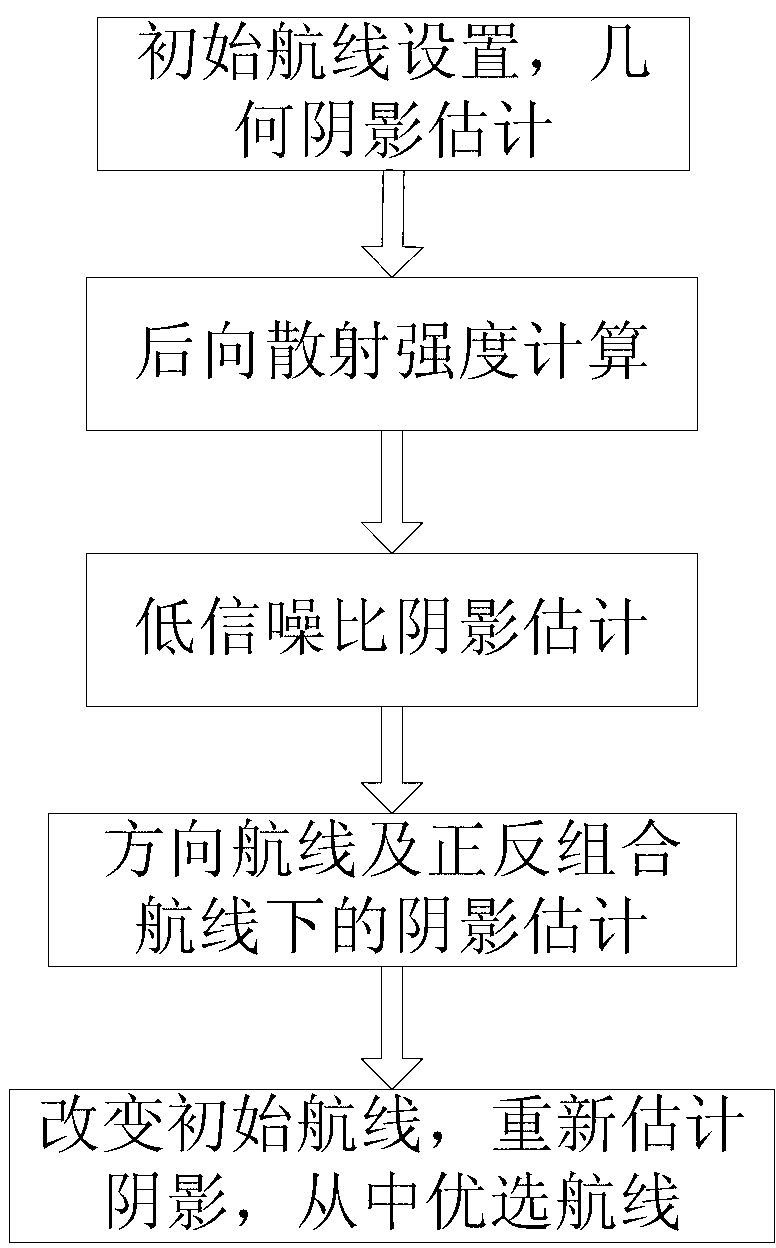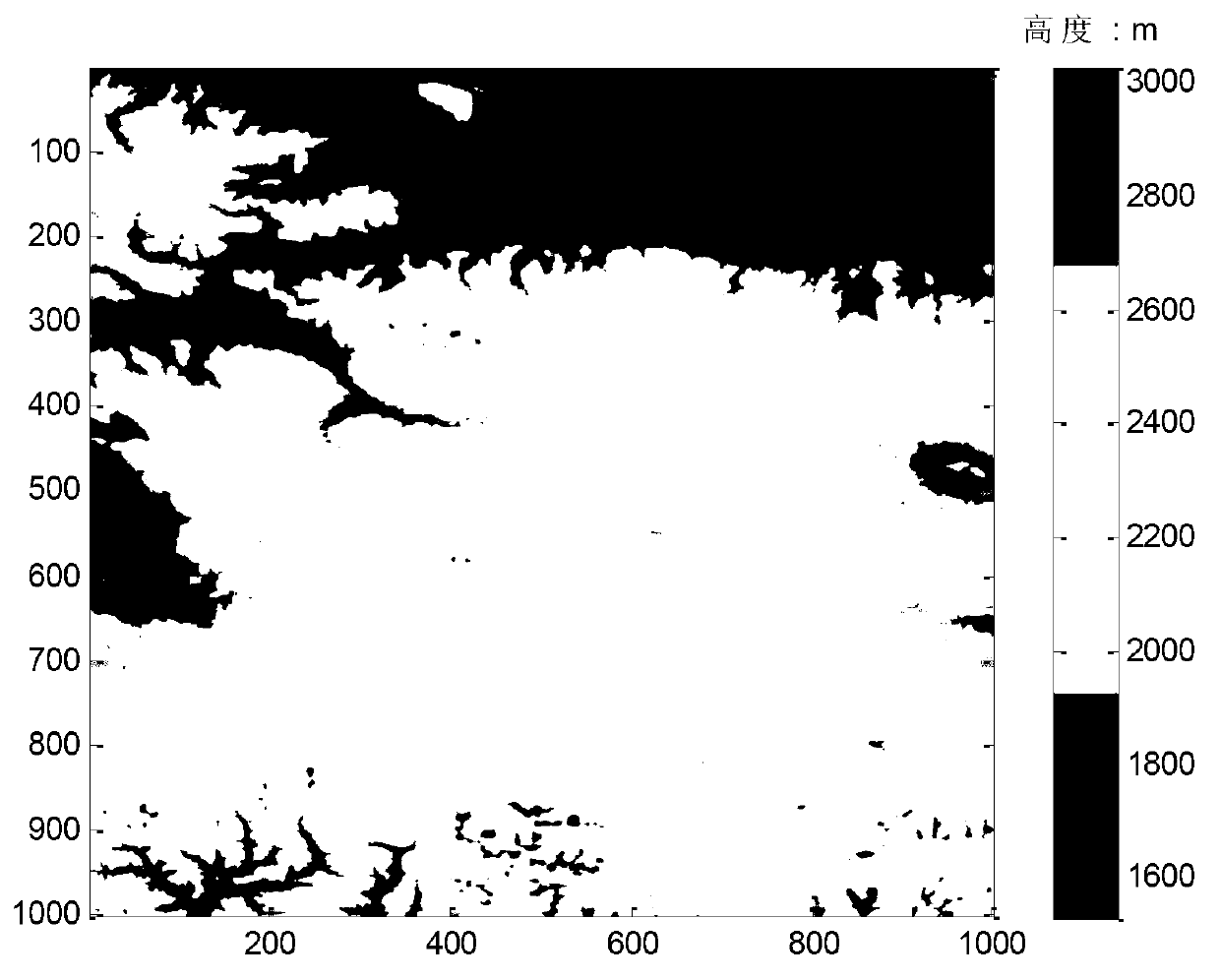Airborne interference synthetic aperture radar (SAR) shadow estimate and plane route design method
A technology of route design and shadow, applied in the field of radar detection
- Summary
- Abstract
- Description
- Claims
- Application Information
AI Technical Summary
Problems solved by technology
Method used
Image
Examples
Embodiment Construction
[0022] like figure 2 As shown, an airborne interferometric SAR shadow estimation and route design method consists of 5 steps, and the specific steps are implemented as follows:
[0023] Step 1: Firstly, according to the position of the survey area, the angle of view of the center of the radar, and the width of the beam in the range direction, an initial route that can cover the survey area is set according to the traditional method, and the survey area is divided into grid units by means of a rough DEM of the survey area. Calculate the slope angle, radar local viewing angle, and shadow length of each grid unit one by one from the beginning, judge whether the grid unit is a geometric shadow, and count the proportion of the geometric shadow to the area of the survey area;
[0024] For example, assume that the center of the survey area is located at N30° north latitude, E89° east longitude, the area is 3km*3km, the rough DEM of the survey area is known (1600m~3000m), and the a...
PUM
 Login to View More
Login to View More Abstract
Description
Claims
Application Information
 Login to View More
Login to View More - R&D
- Intellectual Property
- Life Sciences
- Materials
- Tech Scout
- Unparalleled Data Quality
- Higher Quality Content
- 60% Fewer Hallucinations
Browse by: Latest US Patents, China's latest patents, Technical Efficacy Thesaurus, Application Domain, Technology Topic, Popular Technical Reports.
© 2025 PatSnap. All rights reserved.Legal|Privacy policy|Modern Slavery Act Transparency Statement|Sitemap|About US| Contact US: help@patsnap.com



